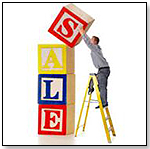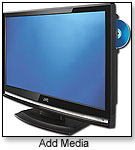
November 4, 2025


| “If you have a picture of a real kid and a quote from the kid ,,, that communicates the value of that toy so much more effectively than just a description.” — Bob Negen, WhizBang! Training |
 1. Brand Consistently. The visual impact of a recognizable logo is powerful. Signage that is consistent and well attuned to the atmosphere of a store will support a customer's positive impressions and communicate information without being distracting. “Stores need to be very conscious of their branding,” Marketing Strategist Allan Katz of The Loyalty Coach told TDmonthly. “If [the store] is higher end, it needs to reflect that.”
1. Brand Consistently. The visual impact of a recognizable logo is powerful. Signage that is consistent and well attuned to the atmosphere of a store will support a customer's positive impressions and communicate information without being distracting. “Stores need to be very conscious of their branding,” Marketing Strategist Allan Katz of The Loyalty Coach told TDmonthly. “If [the store] is higher end, it needs to reflect that.” 2. Use Manufacturers' Materials. Many manufacturers offer promotional material that can be used in a store to highlight product. These professionally produced signs, banners or posters reinforce the look and message of a line and accent a well-organized statement of product on shelf without eating into a small business's advertising budget. “I just trust the vendor to send us what is good. That's why they get the big bucks,” said Margy Peine, owner of Tree House Toys in Cumberland, Md.
2. Use Manufacturers' Materials. Many manufacturers offer promotional material that can be used in a store to highlight product. These professionally produced signs, banners or posters reinforce the look and message of a line and accent a well-organized statement of product on shelf without eating into a small business's advertising budget. “I just trust the vendor to send us what is good. That's why they get the big bucks,” said Margy Peine, owner of Tree House Toys in Cumberland, Md. 3. Supplement. Offering more information, such as add-ons, play ideas or developmental benefits provides incentive for customers to choose something they might otherwise overlook. “We have signs around the store about the value of play: open-ended and child activated,” said Darlene Lockhart, owner of Toy Town in Casper, Wyo. “We call out that good toys are child powered.”
3. Supplement. Offering more information, such as add-ons, play ideas or developmental benefits provides incentive for customers to choose something they might otherwise overlook. “We have signs around the store about the value of play: open-ended and child activated,” said Darlene Lockhart, owner of Toy Town in Casper, Wyo. “We call out that good toys are child powered.” 6. Engage Customers. Katz of The Loyalty Coach recommended requesting feedback from shoppers. “Customers like it when stores ask their opinion about certain things; it's a good opportunity to put something strategically in the store for customers to say what they're interested in, what they want and what they're doing.”
6. Engage Customers. Katz of The Loyalty Coach recommended requesting feedback from shoppers. “Customers like it when stores ask their opinion about certain things; it's a good opportunity to put something strategically in the store for customers to say what they're interested in, what they want and what they're doing.”
Copyright © 2025 TDmonthly®, a division of TOYDIRECTORY.com®,
Inc.